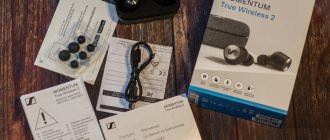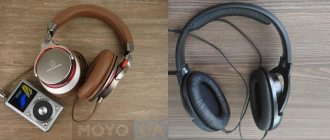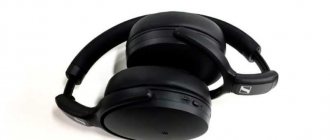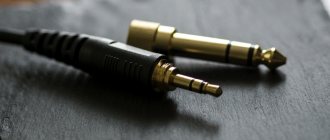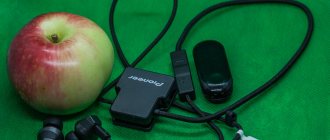Indescribable emotions
Center of St. Petersburg. Evening. Hotel Astoria. Invited to the presidential apartments. Elevator. Ascent to the third floor. You go into the living room. You sit in a soft antique chair. On the table in front of you is a Sennheiser Orpheus HE1. The most advanced headphones in the world.
The assistant presses the power button. The whole system comes to life. Directly from a slab of Carrara marble, the control knobs and two rows of amplifier vacuum tubes extend smoothly and silently. After which the glass lid slowly opens, where the headphones themselves lie.
A languid but short wait until the eight lamps warm up.
You carefully pick up the headphones and put them on. The handmade ear pads comfortably envelop your ears. The assistant hands you the remote control and asks what kind of music you prefer.
You only say two words. Pink. Floyd.
You lean back in your chair, close your eyes and relax. The absolutely pure magical sounds of David Gilmour's brilliant guitar playing literally flow inside your head.
You start trying to catch something you haven't heard before. You're trying really hard. You should definitely hear a familiar melody in a different way. More perfect.
Sennheiser engineers have been developing this model for almost 10 years. These are the best headphones ever created for reference-quality sound. They cost 4.1 million rubles. Are they worth it?
What are we even talking about?
Sennheiser Orpheus HE-1 is an amazing creation of German masters, which not everyone can appreciate, and not at all because of the price of 4 million. The reason is much deeper and lies in human hearing and the difficulty of selecting compositions that can actually “sound”.
The devil in Orpheus lies in the design of the drivers (speakers). All inquisitive minds have been familiar with the design of “ordinary” dynamic headphones since childhood. The principle of their operation is simple and clear. There is a magnet and an electromagnetic coil put on the guide core, voltage is applied to the coil, and it tries to jump out of the magnet, thereby pushing the membrane. This is what creates the sound.
The most important thing here is that the coil pushes a very thick “relatively” membrane in one local place. And for the entire membrane to sound, the impact must be strong (this is why most dynamic headphones do not reproduce quiet and delicate sounds well). Also, a heavy thick membrane stops for a long time and changes direction. Because of which we lose beautiful and biting bass.
Orpheus is designed differently from the word completely; there is, of course, a membrane, but it is huge and so thin (the thickness is only 2.4 microns) that it weighs almost nothing. There are two flat electrodes (the size of a membrane), they will mix the membrane in phase in an electromagnetic field. It moves all at once, and this gives a clear, distortion-free sound from the quietest and most delicate notes to the heaviest and most complex basses.
For such magic you have to pay with a very complex amplifier costing hundreds of thousands of rubles.
In conventional electrostatic models, most of the amplifier's power is lost in the cable connecting it to the headphones. Therefore, Sennheiser engineers decided to amplify the alternating voltage to a high level not at the beginning of the cable, but directly at the gold-plated ceramic electrodes in the headphones themselves.
As a result, the headphones require much less energy to change the polarity of the charge, since their current electrical capacitance values are much lower. With a voltage of only about 5 volts, the balanced music signal is sent to a high-voltage amplifier integrated into the headphones and amplified there.
This guarantees extremely high accuracy of pulse signal processing at relatively low power consumption.
Sennheiser HE1 electrostatic headphones
Foreign colleagues, who had the opportunity to listen to the new Sennheiser product before us, as if by agreement, recognized it as “the best headphones in the world.” Whether this is so, we now have to find out, but the fact that the HE1 model is the most expensive on the market is an indisputable fact. What the second generation Orpheus sounds like and why they are asking 50 thousand euros for them - in the first Russian test.
And although the company did not name its new development Orpheus, the family connection is obvious. Let me remind you that the HE 90 model was released in 1991 with a circulation of only 300 copies.
The new version looks completely different - strictly modern, but no less attractive. The amplifier body is carved from a single piece of granulated Carrara marble, quarried in Italy - the same one from which Michelangelo carved his sculptures. The rare stone not only emphasizes the status of the device, but also, thanks to its large mass, reliably protects sensitive circuits from external vibrations. Since in nature there are no two fragments of marble with the same pattern, each instance of the amplifier is unique in its own way.
Generally speaking, the Sennheiser HE1 is not just headphones, but a high-end system for individual music listening.
However, the exclusivity of this project is manifested not only in the external design, but also in the perfect high-tech filling. In fact, the Sennheiser HE1 is not just headphones, but a high-end system for personal music listening, combining a DAC, pre-amplifier, high-voltage tube driver and semi-open-back electrostatic headphones. Each of these components deserves a separate description.
The built-in digital-to-analog converter is built on an eight-channel SABER ESS ES9018 chip - four DACs for each audio channel in parallel. This achieves low distortion, low noise and a perfectly symmetrical analog signal output. The DAC supports resolutions up to 32-bit/384 kHz in PCM and DSD formats at 2.8 and 5.6 MHz. Digital sources can be connected via optical, coaxial and asynchronous USB B port. There are also analog inputs - XLR and RCA, and the “single-ended” signal is converted into balanced before amplification.
Volume control – analog, motorized.
Since the headphones are electrostatic, they require high voltage and large amplitude of the sound signal to operate. The “acceleration unit”, built on eight SE802S vacuum tubes, is responsible for this. These dual triodes with the Sennheiser logo are produced on our own production line in Slovakia, purchased specifically for this purpose from the former Tesla people's enterprise. To avoid possible burns, the lamps are encased in heat-absorbing quartz glass, a patent-pending design.
And this is not the only original solution. To minimize losses in the cable connecting the amplifier to the headphones, the final stages using high-voltage MOSFETs are mounted directly in the cups. Their outer parts of the cups, machined from aluminum, serve as heat sinks, and the distance between the output amplifier and the diaphragm does not exceed 1 cm. At the same time, according to the manufacturer, up to 70% of the sound energy transmitted from the amplifier is saved. The use of field-effect transistors is also justified - in terms of current-voltage characteristics they are close to lamps, and in hybrid circuits they do not introduce additional components into the distortion spectrum.
The HE1 took approximately 10 years to complete, which is not surprising - each of the more than 6,000 individual components was carefully selected during the design process for their impact on sound.
To prevent the headphones from heating up, Sennheiser engineers developed an amplification class called Cool A. As stated in the technical description, in the low-frequency range the output stage amplifies power in class A at any volume, and at high frequencies it goes to standard class B. That is. . it turns out to be class AB, but with a transition not in power, but in the spectrum of the signal.
The headphones themselves use gold-plated ceramic electrodes and 2.4-micron platinum-plated diaphragms. The connecting cable, consisting of eight strands of silver-plated oxygen-free copper, is connected to the amplifier through a connector with gold-plated contacts located inside the headphone box. A second similar connector is installed on the rear wall of the amplifier - for listening to music together. The outer sheath of the cable is a mixture of materials with different structures that minimize microphone effects.
In addition to the volume control, the front panel of the amplifier contains input and output selectors (the latter has PHONES/MUTE/LINE positions), as well as a three-position CROSS FEED switch. I’ll tell you what it is below. All of these controls are machined from solid brass and chrome plated.
The HE1 took approximately 10 years to complete, which is not surprising - each of the more than 6,000 individual components was carefully selected during the design process for their impact on sound. The result is impressive: at a frequency of 1 kHz and at a sound pressure level of 100 dB, the total harmonic distortion coefficient does not exceed 0.01%, and this is an order of magnitude less than the best speaker systems.
The headphones were developed at the Sennheiser head office in Germany, and they are also manufactured there. The company does not classify its new product as a limited edition, but its production is still limited - due to the fact that the complex product is assembled by hand, it turns out to produce no more than 250 copies per year. Hence the record price of the system – 50,000 euros.
Getting to know the device in person makes a strong impression. When turned off, the controls and lights are hidden inside the case, but when you press the Power button on the remote control, they smoothly slide out. At the same time, the intelligent power system starts up, the lamps begin to glow, and with a short delay, the relays unlock the inputs and outputs. Finally, the glass lid automatically lifts up, prompting you to remove the headphones.
As a listening source, we were provided with a high-quality set from Aqua Acoustic Quality - a La Diva CD transport and a Formula DAC, connected by a standard cable via the I2S bus. To evaluate the sound of the built-in HE1 converter, the transport was connected via coax with an Oehlbach NF113 digital interconnect.
If you sit in front of the speakers and perceive music from the side, sitting in front of the stage, then with the HE1 headphones you literally find yourself in the center of the events.
First, we listen by connecting the source via balanced linear inputs. I activate the Mute mode on the DAC and turn the HE1 volume up to maximum. There is absolute silence in the headphones, as if in a vacuum - no background, no white noise. How this was achieved in such a sensitive tract is unclear. Now - test CDs of various genres. The feeling is exciting: familiar tracks sound completely different from before. If you sit in front of the speakers and perceive music from the side, sitting in front of the stage, then with the HE1 headphones you literally find yourself in the center of the events. That’s right – it’s not the orchestra in your head, but you yourself, as if on stage or close to it, so you begin to hear such details that sometimes you even feel uneasy. The movement of fingers along the fretboard, the breathing of a vocalist, the creaking of a drum stand, the 50-Hz background when introducing a microphone line on the mixing console... The absence of room artifacts and a minimum of external noise are enormous advantages: nuances appear, incl. and spatial ones, which cannot be heard under normal conditions. While most of the same compliments can be directed at most other high-end headphones, the HE1 has a few obvious advantages. Firstly, amazing bass, the depth and intelligibility of which cannot be faulted. The sound of a bass drum has everything: a sharp, biting blow, natural vibrations of a huge membrane and a lot of reverberation components. You can hear that all this is happening not in a large room, but in a slightly muffled studio box. Secondly, the colossal dynamic and frequency ranges, coupled with minimal distortion, create the complete illusion that you are hearing a live voice and live instruments. And the sound does not have the lightness inherent in many electrostats - there is a physicality of images, and a powerful, without compression, drive on both electronic and acoustic music.
And, of course, sound resolution. It is so high that you simply don’t notice it, just as you don’t notice the pixel structure of an image on an Ultra HD screen. The music sounds the way it was recorded in a studio or concert hall, and how similar it is to a live performance in this case depends not on the reproducing equipment, but solely on the skill of the studio staff.
Now let's listen to the built-in DAC HE1. When connected via coaxial, the headphones sound quieter, but if you adjust the volume, it is difficult to notice the difference. Perhaps there is a little less energy, a little less voluminous atmosphere - but this is at the level of the threshold of discernibility.
Sound resolution. It is so high that it defies analysis; the music sounds as it was recorded in a studio or concert hall.
Now about crossfield. This is a design in which the left and right channel signals are cross-mixed into each other to make the soundstage appear wider and the performers to "come out of their heads." The method, I must say, is a compromise, because... The channel separation deteriorates, and the spatial picture turns out to be far from what was intended during recording. In HE1, even with crossfield turned off, most of the imaginary sources are pushed forward, and only some information on the flanks of the scene is tied to the emitters. Activating the mode slightly narrows the scene and, as it were, defocuses it, giving the space more volume. The symphony orchestra sounds amazing. However, I liked it better in the zero position; without processing, the effect of the ongoing musical event “here and now” appears more clearly.
Is the new Sennheiser HE1 worth the money they are asking for it? Everyone decides for themselves: some people need an apartment, others a car, but if you want to have a music system with perfectly fair playback in any conditions, I don’t see an alternative to these headphones.
SYSTEM
- CD transport Aqua Acoustic Quality La Diva
- Aqua Acoustic Quality Formula Digital to Analog Converter
- Cables: digital Oehlbach NF113
- interconnects Aqua Blue XLR
Sennheiser HE1
Manufacturer: Sennheiser electronic GmbH & Co. KG (Germany)
https://ru-ru.sennheiser.com
Construction: open || Playback range: 8 - 100 kHz || Harmonic Distortion: 0.01% (1 kHz, 100 dB) || DAC: 8 x ESS SABER ES9018 || Digital signal resolution: PCM 32/384, DSD 2.8/5.6 || Analogue inputs: RCA, XLR || Digital inputs: optical, coaxial, USB-A || Price: 4,100,000 rub.
share
Tags: Grand PrixHE1Sennheiser
